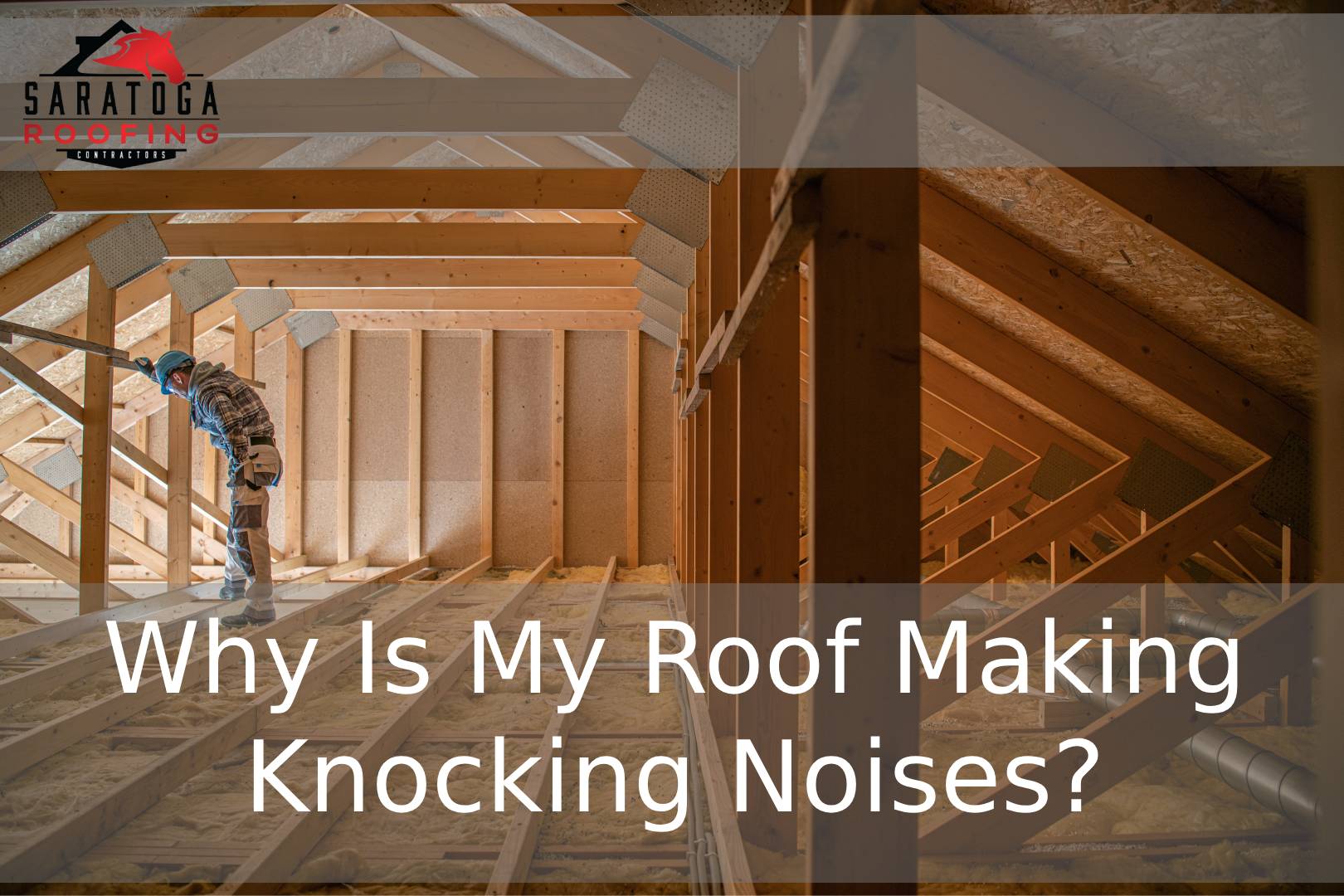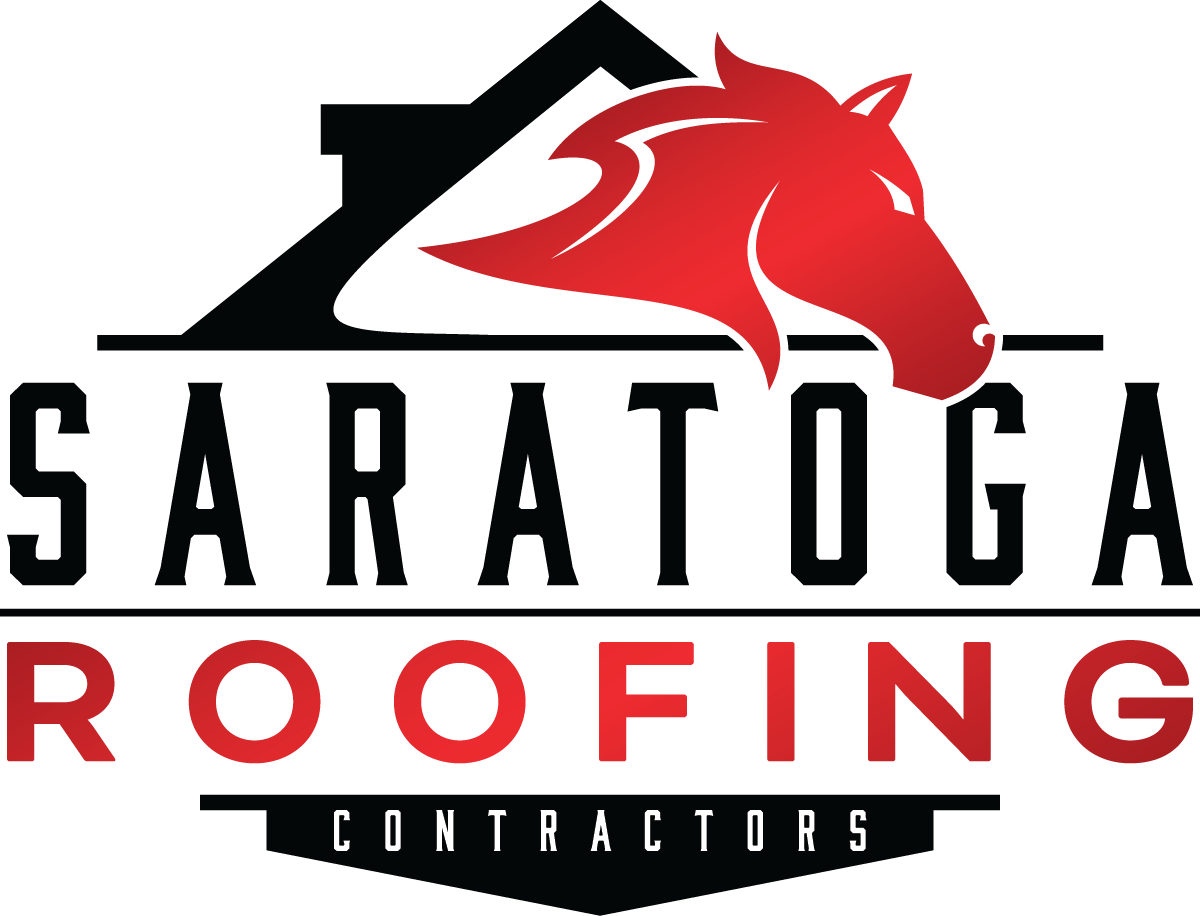
Have you ever heard a strange knock, bang, or creak coming from above, especially at night? It’s an unsettling experience, but you’re not alone.
The knocking noises from your roof are most commonly caused by temperature changes, causing the roofing materials to expand and contract.
Roof noises are more common than you might think, and understanding their causes can help ensure your home remains safe, sound, and comfortable.
This guide will explore the types of roof noises homeowners hear, the common causes (especially in New York’s climate), and what you can do about them.
Whether it’s the weather, structural issues, or the occasional wildlife visitor, this article has you covered.
Everyday Roof Noises and What They Sound Like
Roofs can make various sounds, each pointing to a different cause.
Identifying the type of sound is the first step in understanding what’s happening.
Here are some of the most common roof noises:
1. Knocking
Knocking is often rhythmic and can range from faint taps to louder bangs.
2. Banging
A banging noise can be alarming and is often caused by loose roofing materials, such as shingles or flashing, being whipped by the wind.
3. Popping
Popping is generally the result of thermal expansion and contraction. Temperature shifts can cause materials like wood and metal to expand or shrink, leading to these sharp sounds.
4. Creaking
Creaking noises are subtle but persistent. These sounds could indicate framing or structural changes in your roof. If heard frequently, it’s worth investigating further.
Weather-Related Causes in New York Climates
New York’s variable weather significantly affects the noises your roof might make. Here are some common weather-related causes:
1. Thermal Expansion and Contraction
When exposed to sunlight, roofing materials expand. When it cools down, they contract.
This process can create knocking, creaking, or popping sounds, especially in asphalt roofing and other vinyl elements.
NOTE: This is particularly noticeable in the evening when the roof starts cooling after a sunny day.
2. Ice Dams and Snow Loads
Winter roof sounds are often caused by snow and ice.
The weight of snow can shift, or ice formations can crack as temperatures rise and fall.
NOTE: Pay close attention to these noises in the winter, as heavy snow loads can damage your roof if left unchecked.
3. Wind Gusts and Pressure Changes
High winds can rattle loose soffits, vents, or flashing, causing banging or clanking noises.
Strong gusts may even lift shingles slightly, impacting their alignment over time.
4. Humidity Effects on Wood Structures
High humidity swells wooden materials, while low humidity can cause shrinkage.
This expansion and contraction may result in persistent creaking noises in attics or framing structures.
Structural and Attic-Related Causes
Sometimes roof noises aren’t weather-related but stem from structural or attic-related issues. Here’s what you should keep in mind:
1. Roof Material Types
Different materials produce distinct sounds:
- Asphalt shingles: Found on most homes in Albany, they can expand and contract with temperature changes.
- Metal roofs tend to pop or boom as they expand in the sun or when raindrops hit them.
- Flat or low-slope roofs: Can develop a popping noise if membrane layers expand or contract.
NOTE: Some noises might differ depending on the design and material of your roof.
2. Framing or Truss Expansion
Attics are typically framed with wooden trusses. Over time, nails can loosen, or wood can settle, resulting in popping or creaking noises.
3. HVAC Ductwork or Plumbing
Attic systems can create their share of sounds:
- Pipes and vents: May bang or pop during heating cycles or expansion.
- HVAC systems can make clicking or tapping noises as ductwork adjusts to temperature changes.
NOTE: Regular maintenance of your HVAC system can prevent many noise-related issues.
4. Pests or Wildlife
Birds, squirrels, or raccoons can easily find their way into or onto your roof. Scratching, running, or tapping noises are usually a telltale sign of critters.
When Is It a Sign of a Problem?
While most roof noises are harmless, some could signal deeper issues. Watch out for the following:
- Visible roof damage: Sagging, cracks, or missing shingles may indicate a structural problem.
- Persistent or worsening noise: If the sounds increase in frequency or loudness, they deserve professional attention.
- Leaks or drafts: Unusual noises paired with water stains or drafty spots could indicate damage.
NOTE: If your roof is older than 15, keeping up with regular inspections is essential, as wear and tear accelerate.
What You Can Do First (Troubleshooting Checklist)
Before calling a professional, run through this quick checklist:
- Inspect your attic for loose boards, signs of damage, or evidence of pests.
- Check for visible roof damage from the ground using binoculars.
- Document noise patterns, noting whether they coincide with weather changes or specific times.
- Observe temperature correlations: This can help determine if the noises are caused by thermal expansion.
NOTE: Never attempt to climb onto your roof for inspection. Stay safe and leave that to the professionals.
When to Call a Professional
If the source of your roof noise remains unclear, it’s time to call in the experts:
- Contact a professional roofing contractor for a thorough inspection.
- Depending on the cause, you may also need an attic insulation specialist or pest control professional.
A roofing professional will look for hidden damage, such as loose underlayment or worn fasteners, that you can’t access yourself.
Consider contacting Saratoga Roofing for a reliable inspection and advice specific to your roof’s condition.
Preventative Maintenance Tips
You can minimize roof noises and potential damage by taking a proactive approach:
- Schedule regular roof inspections, particularly after harsh winters or intense storms.
- Improve attic ventilation to reduce thermal expansion issues.
- Upgrade insulation to prevent moisture-related swelling or contracting in framing materials.
- Trim overhanging tree branches to keep critters off your roof.
Final Thoughts to Keep Your Home Peaceful
Most roof noises, while annoying, are normal and not a cause for panic.
Weather changes, natural material movement, and occasional wildlife visits explain the bangs and pops we hear. However, persistent noises or visible issues shouldn’t be ignored.
Catching a problem early can save you from costly repairs down the line.
If you’re still wondering about strange noises from your roof, don’t hesitate to contact a local contractor like Saratoga Roofing to ensure everything is in great shape.
After all, your peace of mind is just as important as your roof’s soundness.
FAQ Section
1. Why does my roof make more noise at night?
At night, temperatures drop, causing roofing materials to contract, leading to popping or creaking sounds.
2. Should I be worried about a knocking sound coming from my roof?
Not always. Thermal changes often cause knocking noises. However, if the sound persists, consult a professional.
3. What animals are likely to cause roof noises in New York?
Birds, squirrels, and raccoons are common culprits. Look for signs like nests or droppings.
4. Can roof noises signal structural damage?
Yes, especially if paired with sagging, cracks, or leaks. Get a professional inspection if you suspect damage.
5. Are metal roofs noisier than asphalt shingles?
Yes. Metal roofs tend to amplify noises, particularly during rain or thermal expansion.
6. What tools can help me identify roof damage?
Binoculars and noise journals can help you monitor issues, though you’ll likely need a professional inspection for a complete assessment.
7. How much does a roof inspection cost?
Most standard roof inspections range between $150–$400, depending on the size and condition of your roof.
8. How often should I have my roof inspected?
Aim for an inspection twice yearly, typically in spring and fall, or after severe weather events.
9. Can loose gutters cause roof noises?
Yes. Loose gutters can bang against the fascia during strong winds, creating knocking noises.
10. Is it safe to inspect my roof?
No. Roof inspections can be dangerous. Always leave them to a licensed professional roofing contractor.
